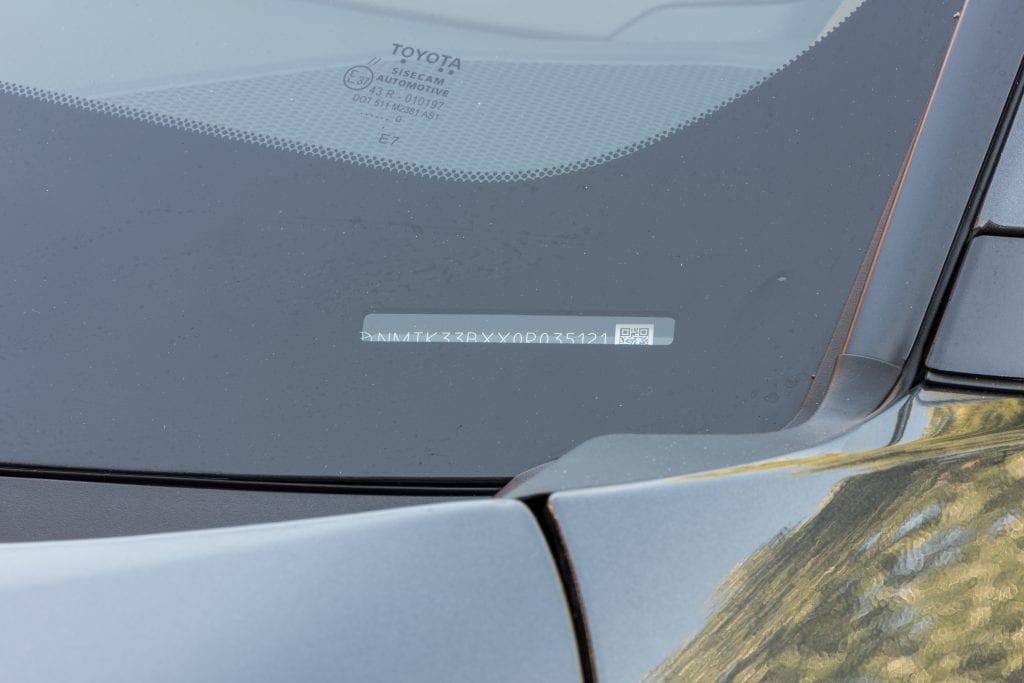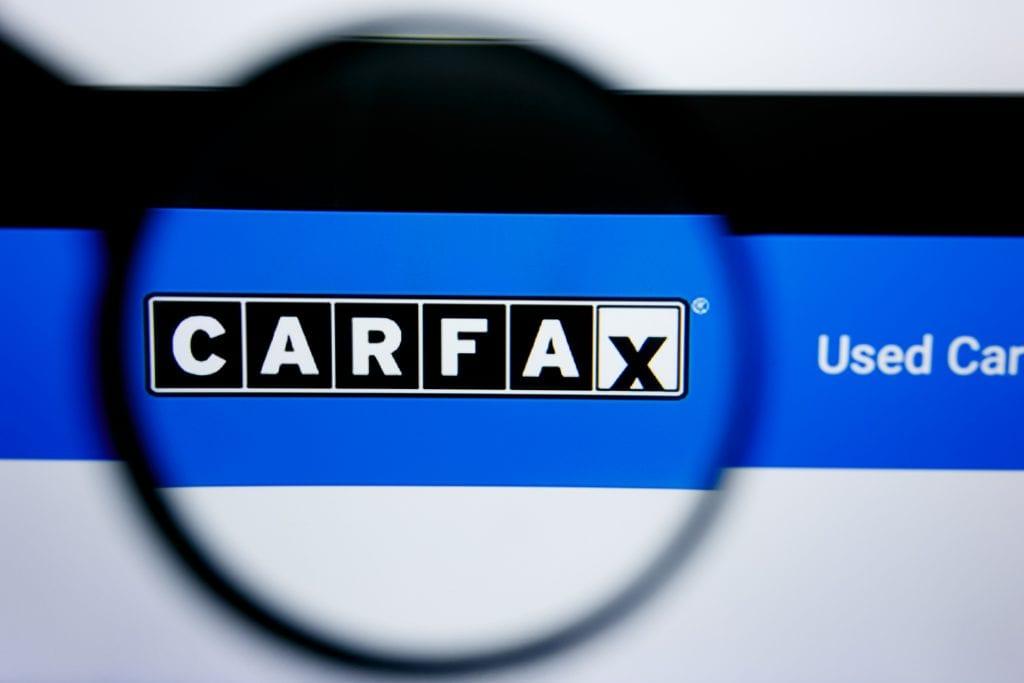How to Evaluate a Used Car from Its VIN and Records

Contents
It used to be that used cars were purchased solely as acts of faith. Tires were kicked, leaks were hunted down, and the wad of receipts in the glove compartment might prove someone once cared about the machine. For a while.
In the 21st Century, virtually every used car is dragging a computerized trail of documentation. And that data has been commoditized in the form of informational websites like Carfax.com or Vincheck or whatever went live online in the last few moments. Some sites charge for the information. Some give it away. The relative worth of information you pay for versus what you get for free is something you can only discover with experience. Keep in mind, however, that spending a few bucks on researching a purchase that’s hundreds or thousands of times greater than that expense is likely worthwhile.
Introduction
All documentary research of a used car starts with 17 digits of fun: its vehicle identification number, or VIN.
Despite all one may hear about “numbers matching” classic cars and “decoding VINs,” automakers were often less than particular about keeping production records about their vehicles. And no two manufacturers necessarily used the same serial number system or harmonized the production of vehicle units with the documentation that went with them. Sometimes a “build sheet” found in an old muscle car, for instance, precisely traces the car’s construction including the options installed at the factory. And sometimes? Not so much.
If you’re out hunting classics, it’s good to get as much paperwork as you can on the car. Just keep expectations low, then lower them a bit more to compensate for the passage of time.
But that all changed back in 1981 when the National Highway Traffic and Safety Administration (NHTSA) acted to standardize the issuance, format, and placement of vehicle identification numbers (VINs) on all vehicles. Since then all new vehicles sold in the United States use a 17-digit alphanumeric identifier that provides a (relatively) reliable tool for tracking a vehicle across its life.
But standardized VINs wouldn’t have been so valuable if it weren’t for the digital revolution that came alongside the standardization. IBM also introduced its personal computer in 1981 and decentralized computing power soon passed throughout businesses and governments. That includes dealerships, insurance companies, car auctions, banks, finance companies, police agencies, departments of motor vehicles, and eventually even to independent repair and body shops. By the 1990s, collections of receipts didn’t matter anywhere near as much as electrons that were tracking vehicles every time they were serviced, repaired, bought, sold, and wrecked. There’s little need for a car’s owners to maintain records on a vehicle. The records are generated automatically.
It’s all those databases – governmental and private – that companies like Carfax mine to generate vehicle history reports. And all those data streams grow more extensive and more valuable with every passing day. Take advantage of that.

Finding the VIN
Every recent and current vehicle displays the VIN on a plate in the lower left corner of the windshield and on the driver’s side B-pillar. There are also “hidden VINs” stamped into several metal parts throughout the vehicle. How many hidden VINs there are varies from manufacturer to manufacturer and vehicle to vehicle. They can be in obvious places like along a frame rail on a truck, or squirreled away on the lip of a rocker panel. On many Toyotas, for instance, a hidden VIN s stamped into the floorpan under the leading edge of the front passenger seat.
Research on the internet will help you know where hidden VINs may be on a vehicle you are thinking of buying. If all those hidden VINs aren’t the same, be suspicious. Very suspicious.
VIN Decoding
The seventeen numbers and letters that make up a VIN all have specific meaning. Most of which are completely irrelevant to uncovering a vehicle’s value, worth or condition. But here goes…
First Digit – This number or letter indicates in which country the vehicle was assembled. American built cars lead with a 1, 4 or 5. Canadian made go with a 2. Mexico a 3. Japan cleverly goes with a J. Korea, a K. If you want to go deeper than this, try this link for a NHTSA decoder site.
Second Digit – Indicates the manufacturer. Yes, “T” is for Toyota. And “G” is for General Motors. But some of the codes cat get counterintuitive or even misleading. Here’s a page that will dizzy your mind with how vast the automotive industry truly is.
Third Digit – This is code for the type of vehicle it is and what division made and marketed the vehicle.
Fourth through Eighth Digits – These letters and digits code out as what the vehicle was originally equipped with. That’s engine size and type, transmission, braking equipment… loads of stuff. Decoding this can be peculiar to each car, but the previously mentioned NHTSA decoder will translate.
Ninth Digit – This is the security check digit. That is a digit planted by the Department of Transportation based on some mystical formula that solely acts as a control on detecting phony VINs. So clever.
Tenth Digit – This one is there to indicate model year of the vehicle. Not the year the thing was assembled, but the year for which it meets all the applicable rules and regulations. Here’s a chart listing the year codes. Don’t get lost in the romance of it.
Eleventh Digit – This is a code identifying the plant in which the vehicle was assembled. These, of course, vary with manufacturer.
Twelfth through Seventeenth Digits – This is the manufacturer’s serial number for the particular vehicle. Usually, these numbers are sequential with production order. Usually.

Following the VIN Trail
Once you have found and decoded the VIN, it’s time to do some real digging. We recommend starting with a vehicle history report from a service like Carfax or Autocheck. Check out our article, How to Read a Vehicle History Report, to learn more about this critical research step, which can tell you everything from how many owners a car has had to where it’s been serviced to whether it’s ever been in a major accident. Important stuff.
Even today, though, not every vehicular record is digitized. For instance, you may be handed a ball of receipts by the seller. Take the time to go through them one by one (more on this below). Each should list the vehicle’s VIN on it in a prominent place. If they don’t, add skepticism amid your consideration.
Do it yourself is a great tradition in automotive maintenance. Unfortunately, though, DIY services won’t be found in a searchable database. There’s nothing wrong with an owner doing his or her own maintenance. But that lack of a digital trail is a disadvantage when it comes to assessing a car’s history. There are just too many good used vehicles with solid and searchable records to settle for one that only has an owner’s word to back it up. Then again, the lack of digital records may be a good point to raise during price negotiations. It may be the owner is honest, and taking some significant coinage off the price will make the used vehicle that much more attractive.
It’s important to note that the databases used by Carfax and others aren’t infallible. There may be gaps, omissions, and plain ass frauds embedded within them. It all relies on the institutions reporting service and insurance claims being reliable and ethical. And reliability and ethical behavior aren’t things that can be legislated into existence.
Be suspicious of long gaps in the digital documentation. Or in cars that have operated in multiple states. Moving a car from state to state is one tactic to “title wash” stolen or damaged vehicles and give them clean records. Again, the vehicles themselves may be fine. But with so many others having more consistent and reliable records, why not hold out for that?

Reading the Receipts
What Carfax can’t tell you, a vehicle’s service records often will. Make sure to follow up your online research with a thorough examination of any physical receipts for service and repairs that the seller has available.
For a quick check, call the shops who did the work and see what they can tell you. Was the vehicle in for regular maintenance? Or was it needy and neglected? Also, do some digging about the shops that have worked on the car. Are they legitimate? Or some fly-by-night operation with an awning alongside a clapped-out Winnebago?
Look for the type of work that was performed. Light bodywork is good. Major bodywork isn’t good. Particularly beware of receipts that show paint work, but no body work. It’s rare that it’s a good idea to paint over a panel that’s dented or has rust – find out why the car or truck was painted.
Also look for receipts that may have been saved from accessory purchases. Bug deflectors, sunshades, and regular wiper purchases often indicate a vehicle cared for precisely and constantly. Look for receipts for tire replacements that indicate all four tires wore evenly and were replaced at the same time. And tires should all be of the same well-known brand and model. If there are a lot of receipts for high-end waxes, polishes, and cleaning supplies, that’s good too. If there are receipts for multiple detailing sessions, that’s a sign that the clean condition it’s in now isn’t something that just happened to get it sold.
Receipts aren’t generated by lawyers, but by shops that are both well-established and totally iffy. The deeper you dig, the more likely you’ll find gold.
The best receipts are from shops with which you’re familiar and that have the sort of reputation that glistens in the sun. Receipts that are consistent, align with the factory maintenance schedule (check the owner’s manual), and show diligence on the owner’s part are what you want to find.

No Substitute for Inspection
No matter how impressive a vehicle’s service and repair pedigree may be, it’s no substitute for an inspection by a qualified and honest mechanic. Go to a specialist for these – the best Audi shop in town for Audis, the best Honda guru for Hondas, and so forth. If you already have experience with a specialized mechanic, it may pay to keep shopping within that brand.
If you don’t already have a trusted mechanic, find one.
The Bottom Line
Self-knowledge is critical for all things in life. Before buying any used vehicle, know what your tolerance for risk is. Are you the sort of person confident in their own luck to risk buying a salvage title car? Hey, go for it and save some bucks. Are you so risk adverse that you don’t leave the house without a Geiger counter and employ a food taster? Then dive deep into the documentation. Or buy a new car with a warranty, you timid creature you.
But never fear to know more about what you’re buying. With used cars, the time and effort you invest in your research always pays off in the end.